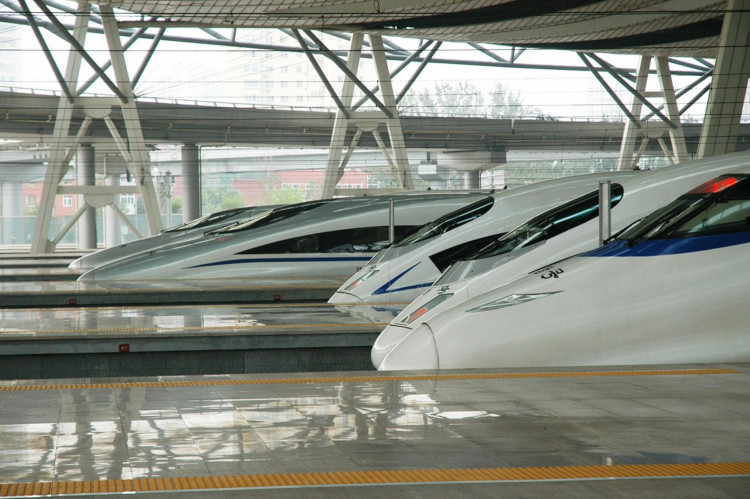The opening of the high-speed railway connecting Beijing and Zhangjiakou is seen to help ease the level of poverty among rural residents and counties in the Beijing-Tianjin-Hebei region.
The new train line is also expected to bring more opportunities to boost local industries, especially with the approaching Winter Olympics in 2022.
Zhangjiakou is the most impoverished area near the capital, about 200 kilometers northwest of Beijing and the co-host city of the 2022 Winter Olympic Games. Five are classified as "highly poor" out of its 18 counties and districts.
The end of 2019, according to local authorities, had lifted about 98,000 rural residents from 747 villages in Zhangjiakou out of poverty.
The example of Zhangjiakou shows the commitment of the Chinese Communist Party to establish a moderately prosperous society in all respects before its centennial celebration in 2021 and to lift all rural residents out of poverty, said Xu Lin, head of the State Council Information Office.
According to Xu, in remarks he made Wednesday to members of the press in Zhangjiakou, Hebei Province, the railway will also mean that this year China "will make every effort to achieve the goal from the grassroots level."
Of these, the 174-kilometer Beijing-Zhangjiakou line, with a designed maximum speed of 350 kilometers per hour, reduces travel time between the two cities from more than three hours to 47 minutes, making Hebei one of the few provinces with a high-speed rail system connecting all its key areas, he said.
China is planning to build at least 4,000 kilometers of rail lines this year, half of which will be high-speed, the China State Railway Group announced last week.
The new rail lines will form part of a $386 billion spending on transport infrastructure projects, 31 percent of which will go to the rail industry.
China's transport program has stretched the country's rail network's total length to 139,000 kilometers by end of last year, 35,000 kilometers of which was high-speed. The Beijing-Zhangjiakou link was among the 51 lines opened last year.
Lu Dongfu, Chinese State Railway Group's general manager told during an annual conference last week that building the Sichuan-Tibet link -- the second after the Qinghai-Tibet line covering the Tibet autonomous region -- would be a major project for 2020.
Lu added that the rail sector's revenue increased 6 percent to $117 billion in 2019, and by the end of 2020 it was expected to reach $125 billion. He also said that China Railways would also provide a more generous discount on more routes, and promote online ticketing throughout the country's booming transport industry.






